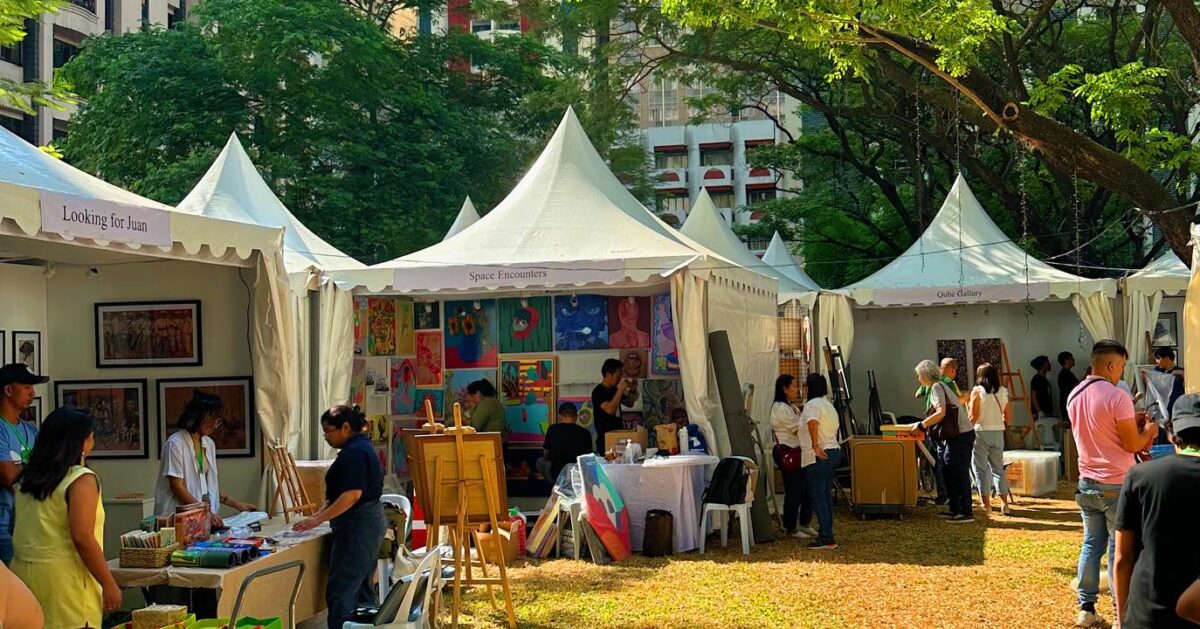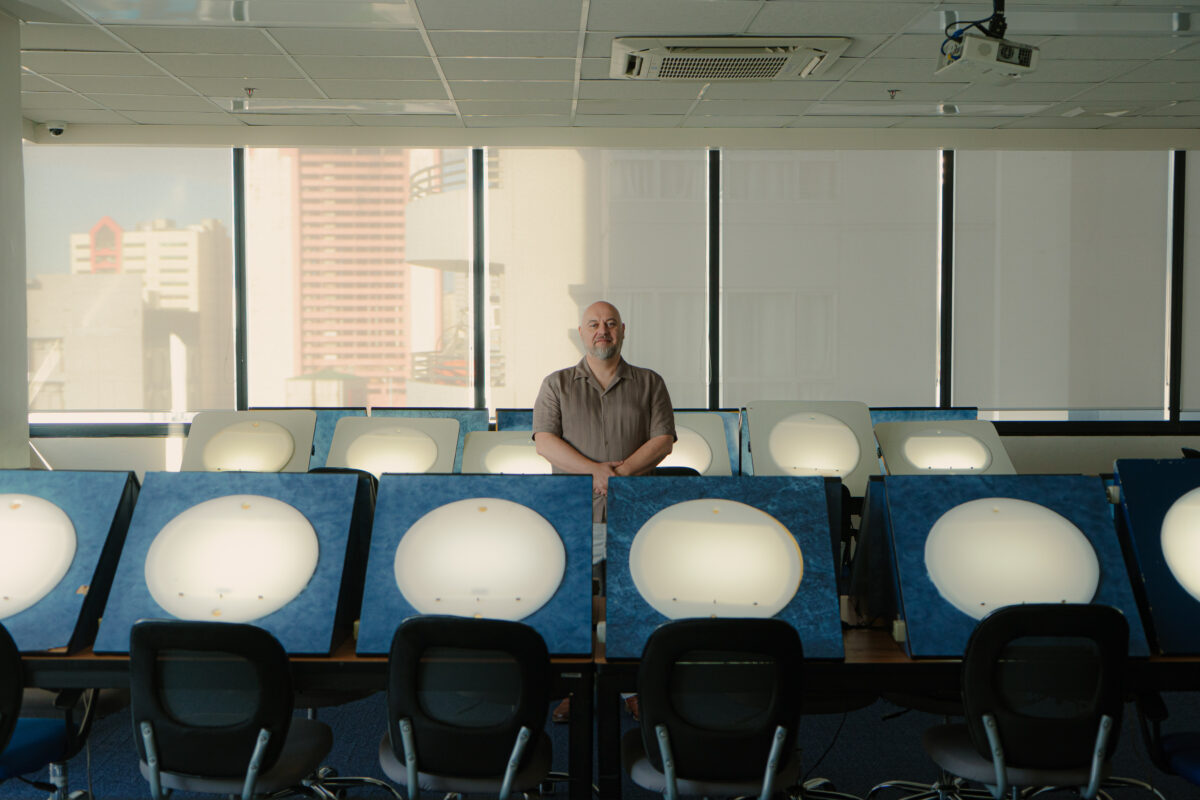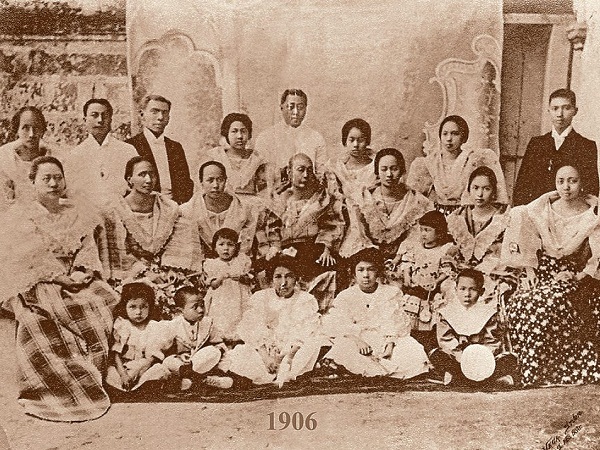
We have always had family reunions since we were children. And the reunions on my father’s side, the Hizons of Pampanga, were held most of the time in our ancestral house in San Fernando, the Hizon-Paras residence.
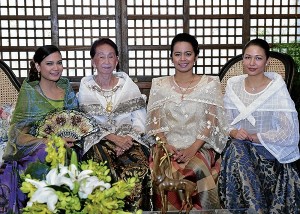
Most of the children of my grandparents Ramon Hizon and Maria Paras lived there. When we were teenagers and my father Rodolfo finally retired from politics after many years as mayor of San Fernando and vice governor of Pampanga, our family moved to Hacienda San Agustin where my father built a sprawling bungalow-type house, away from the noise of the fast-growing town and the noise of politics.
Other aunts and uncles soon followed until only the family of my father’s youngest sibling, Eloisa Hizon Gomez, whom we all fondly called Auntie Lucit, remained in the old house with our old-maid aunt, Imang Unding.
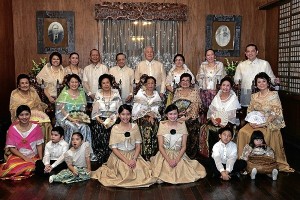
But even Auntie Lucit who inherited the house had to move to Hacienda San Agustin in 1995 due to the floods caused by the eruption of Mt. Pinatubo. And so it happened that for so many years, our ancestral house was abandoned. No one lived there.
Restoration work begins
In late 2010, Auntie Lucit’s family decided to restore the ancestral house under the strict supervision of my cousin, Dom Martin Gomez, OSB. Guided by an album of old photographs of the house and important events there, and continuously asking suggestions from conservation authorities, he slowly restored Bale Matua to its glory. After a year and a half of restoration work, we were finally able to have our family reunions there again, like the Good Friday procession last year.
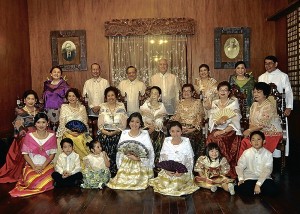
But it was last Jan. 5 when we really had a grand reunion like no other! It was the 92nd birthday celebration of Auntie Lucit and it was decided that we would recreate a 1906 photograph of our great-grandmother, Victoria Singian Hizon, and her children. Our own Lolo Ramon and Lola Maria were in that picture with their only daughter then, Remedios.
It was in 1976, 70 years after the original photo was taken, that we recreated that same picture for the first time, with our parents posing in place of our grandparents.
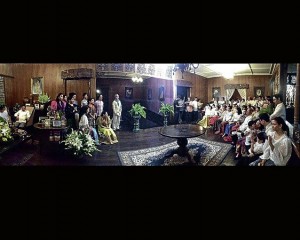
There are only two surviving among the Hizon siblings—the birthday celebrator Auntie Lucit and our 99-year-old Pink Sister aunt, Sr. Maria Asuncion. And it was finally our turn to appear in that family picture, 107 years after the first one was made.
The theme was, of course, Filipiniana. So months before that day, we were all excited, trying to choose what Maria Clara dress to wear. The men, too, started checking on their best Barong Tagalog for that “historic” shoot at Bale Matua.
We used to call our ancestral house either Bale Matua (Old House) or Bale Maragul (Big House). But nowadays, we just prefer to call it Bale Matua.
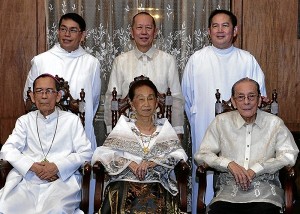
Our family has grown so big that the house now seems small when all of us are around! As Dom Martin jokingly said, “We’re now much more than 100, and the house, at the most, can comfortably accommodate only 100 persons for a sit-down dinner like tonight!”
Childhood memories
Coming to Bale Matua is always exciting since it brings back wonderful memories of childhood. We would always look for the places we used to hide in as children when we played hide-and-seek in the big sala. The verandillas are long gone but we still remember peeking through them as we watched the Good Friday processions, or the Lubenas (lantern processions) of Christmas.
The big stone staircase is still around. Many Philippine presidents and other VIPs have used those stairs to enter Bale Matua.

On that very special night last month, there was magic in the air! Yes, the white lanterns on all the windows around the house gave it a very festive mood. And since all the cars were parked all the way in the backyard, not a hint of modernity was noticeable as one entered the gate.
The sight of Bale Matua, a huge stone and wood house fully lighted, with delicate wooden calado above the capiz windows, was simply awesome! As we climbed the old stairs in our Maria Claras with stiff panuelos and elongated skirts, it was like going back to a time when everything was more genteel, when women walked more elegantly, and dashing gentlemen were always ready to give them a hand.
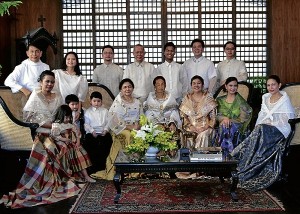
For the first time in so many years, I saw my cousins proudly wearing again their antique gold tamburin, and peinetas adorning their well-coiffed hair. Everyone simply cooperated and attended the celebration in their best Filipiniana attire. Even the children. Chin-Ching, the 3-year-old great-granddaughter of the birthday celebrator, was so cute in her Maria Clara with plaid taffeta skirt that matched her mom’s gown.
Posing for posterity
There was endless picture-taking, aside from the “official” 1906 shoot, and everyone simply wanted to have a photo taken with the celebrator, Auntie Lucit, who was in a turn-of-the-century Maria Clara top with full long sleeves and a long full skirt. One cousin was quick to say that as seen in the 1906 photo, the women wore full long sleeves and full skirts, signs that they were not of the working class. “They were Doñas!” he exclaimed. Ha! Ha!
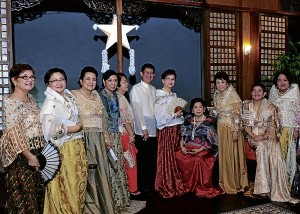
And as we continued to pose and have pictures taken during the reunion, a violinist walked around playing nostalgic kundiman and classical music. Our Dizon cousins all wanted to have a photo taken in front of the oil portrait of their mom, Queen Corazon I of the Pampanga Carnival in the 1930s which was placed above the antique piano in the main sala.
My own siblings didn’t miss the chance either to take their photos before the oil portrait of our father Rodolfo, taken when he was a young mayor.
The mood was so wonderful, the bonding genuine and the laughter endless. It was, indeed, an affair not to be missed.
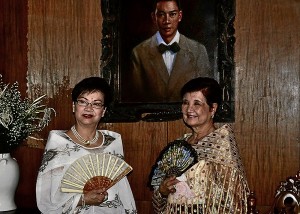
That’s why some of our cousins from abroad, like Josie Dizon Wenko from Hong Kong, Malou Hizon Sackett from Melbourne and Susan Dizon Palomo from Chicago made sure their schedules would allow them to be in San Fernando on that day.
Authentic Kapampangan feast
Soon it was time for dinner, and the feast was authentic Kapampangan. Instead of the usual holiday fare, we had traditional old Kapampangan food like bringhe, adobong balut, lengua, relyenong bangus, lumpiang gule (vegetable egg roll), and the specialty at Bale Matua, Rabo del Toro (oxtail slow-cooked for five hours in olive oil with chorizos, olives, giant red bell peppers and mushrooms).
And of course, being Kapampangan, we had lots of desserts, including marsipan de pili, yema with dayap, mores cakes to-die-for and even a special Manjar de los Dioses-based dessert with lots of walnuts, cream and almond shavings prepared by Dom Martin to honor our grandfather, and so named it “Don Ramon.”
Another cousin, Atching Lillian Borromeo, the Kapampangan heritage cuisine authority and food historian, prepared the traditional San Nicolas cookies and the dulce prenda, the signature old Hizon dessert made of arraro flour and preserved kundol or wintermelon. Freshly cooked bibingka with ebun buru (salted egg) from the bibingkahan stationed next to the kamalig, and hot chocolate were served much later.
For a lot of our youngster nieces, nephews and grandchildren, this was their first time to experience a traditional Kapampangan celebration. As in the olden days, the place of honor at dinner was reserved for the archbishop. This time, Archbishop Paciano Aniceto, DD, whom we all call Apung Cetu, led the prayers before the meal and sat at the cabezera while we senior cousins joined him for dinner on the 18-seater antique narra dining table.
Serenading the celebrant
But the real surprise of the night was still to come! After dinner, we were all requested to return to the big sala. Andy Alviz, the founder and director of Arti Sta. Rita, had brought his lead singers to serenade the celebrator, the archbishop and the guests. Andy introduced each song with a little historical background so it also made the guests really appreciate all the more those beautiful Kapampangan songs our lolos and lolas loved.
The singers, in beautiful baro’t saya for the women and camisa de chino for the men, gave a hauntingly beautiful rendition of “Ima” (Mother), leaving not a few of the guests teary-eyed. They also sang a song in honor of the archbishop, whose life story was the subject of the latest sarsuela presented by the Arti Sta. Rita recently.
But even good things have to come to an end. And so it was time to go, but not before promising each other to do this again—come back to Bale Matua, wear our traditional clothes, eat traditional Kapampangan food, listen to traditional Kapampangan songs, and recall the way our lolos and lolas lived.
Listen again to their stories. Keep our roots. For there is much wisdom and benefit in doing so. Indeed, the magic that night continued to weave its enchantment on those who were there on that memorable family reunion to remember!





